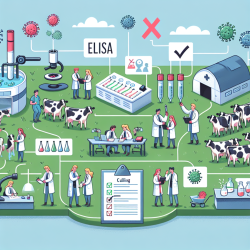Introduction
Menstrual health and hygiene (MHH) is a critical yet often overlooked component in achieving the Sustainable Development Goals (SDGs). The research article titled "How addressing menstrual health and hygiene may enable progress across the Sustainable Development Goals" by M. Sommer et al. highlights the profound impact that MHH can have on various global priorities. As a practitioner in the field of education and health, understanding these linkages can significantly enhance your ability to contribute to these global objectives.
Understanding the Linkages
The research outlines how MHH is interconnected with all 17 SDGs, emphasizing its role in areas such as education, gender equality, health, and water, sanitation, and hygiene (WASH). Here are some key insights:
- Education (SDG 4): Lack of adequate facilities and support for menstrual health in schools can impede learning and attendance. Ensuring gender-sensitive environments and comprehensive education on MHH can enhance educational outcomes.
- Gender Equality (SDG 5): Addressing menstrual health challenges can reduce stigma and discrimination, empowering those who menstruate to participate fully in society.
- Health (SDG 3): MHH is crucial for overall health and well-being. It affects sexual and reproductive health, mental health, and can influence access to healthcare services.
- Clean Water and Sanitation (SDG 6): Access to clean water and sanitation facilities is essential for managing menstruation safely and with dignity.
Practical Steps for Practitioners
As a practitioner, you can take several steps to incorporate the findings of this research into your work:
- Advocate for Policy Change: Use the research to advocate for policies that integrate MHH into educational and health programs. Highlight the importance of MHH in achieving broader development goals.
- Implement Comprehensive Education: Develop and implement educational programs that include MHH as a core component. Ensure that both students and educators are informed and equipped to address menstrual health issues.
- Foster Inclusive Environments: Work towards creating environments that are supportive and inclusive for those who menstruate. This includes providing necessary facilities and reducing stigma associated with menstruation.
- Engage in Further Research: Encourage further research to explore the direct and indirect impacts of MHH on various sectors. This can help in developing targeted interventions and monitoring progress.
Encouraging Further Research
The research by M. Sommer et al. serves as a foundational piece for understanding the critical role of MHH in sustainable development. However, there is a need for continued research to explore these linkages in greater depth and to develop effective monitoring and evaluation frameworks.
To read the original research paper, please follow this link: How addressing menstrual health and hygiene may enable progress across the Sustainable Development Goals.










